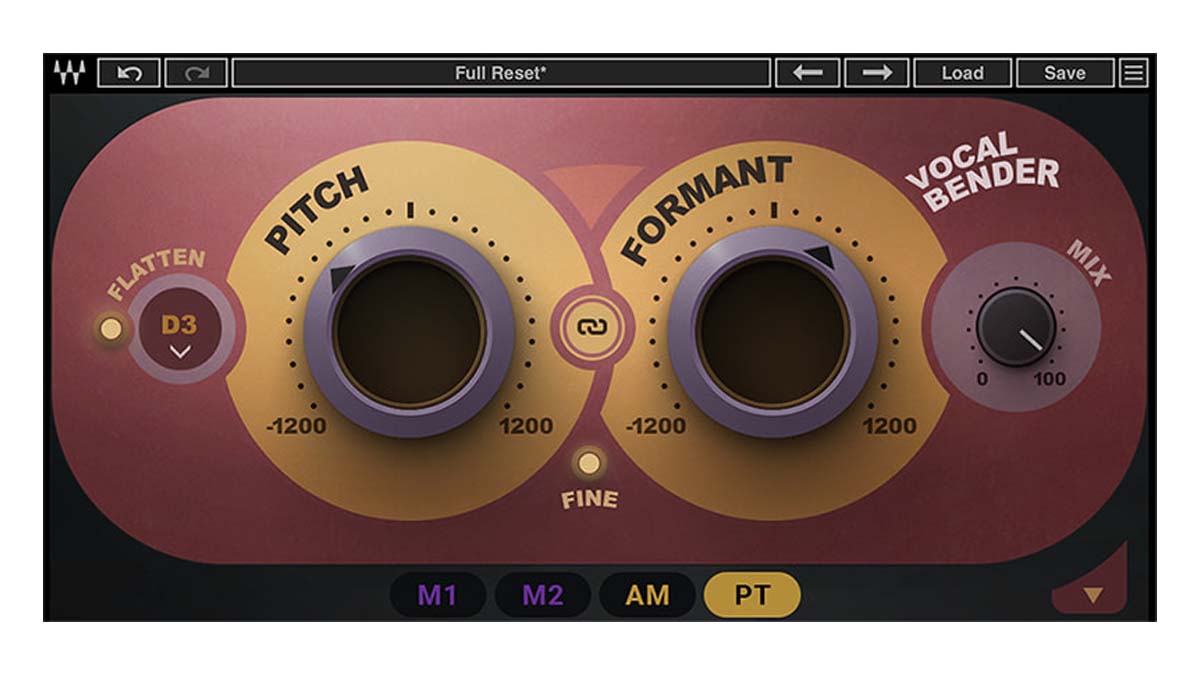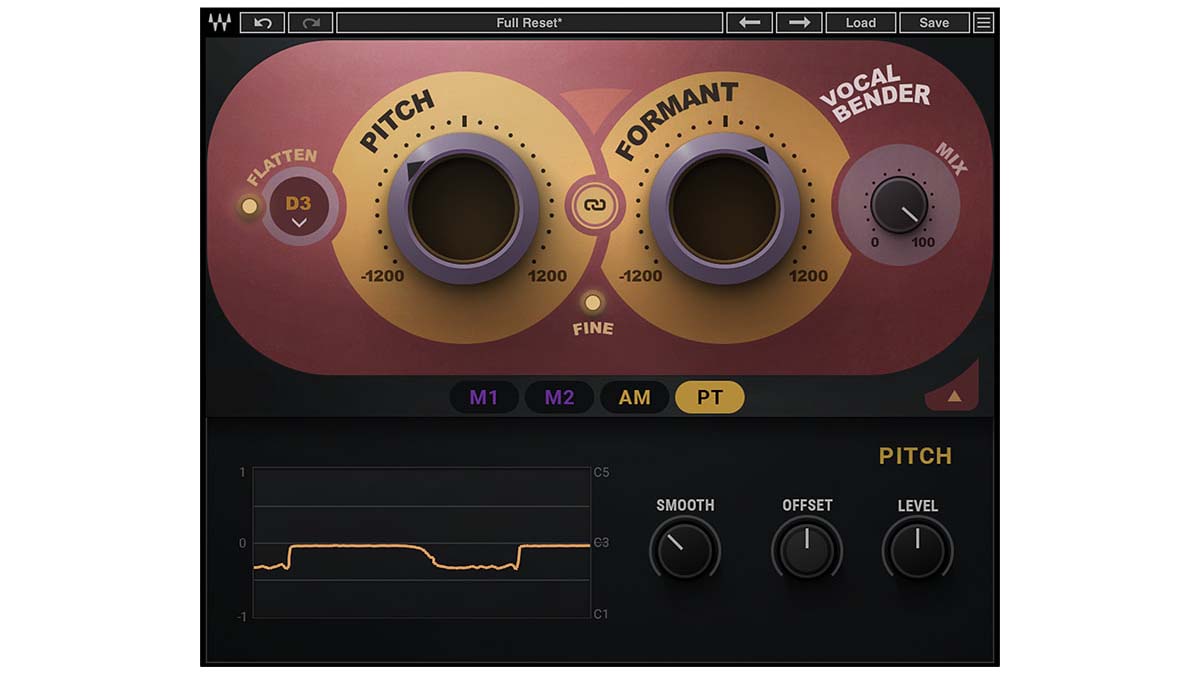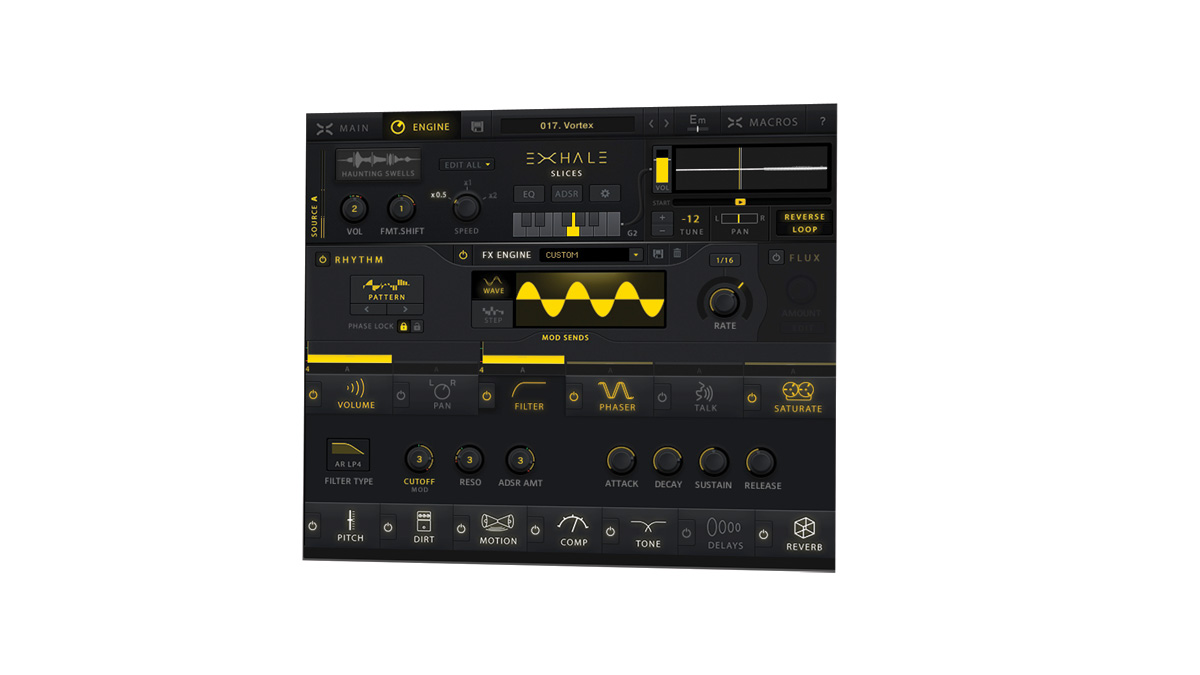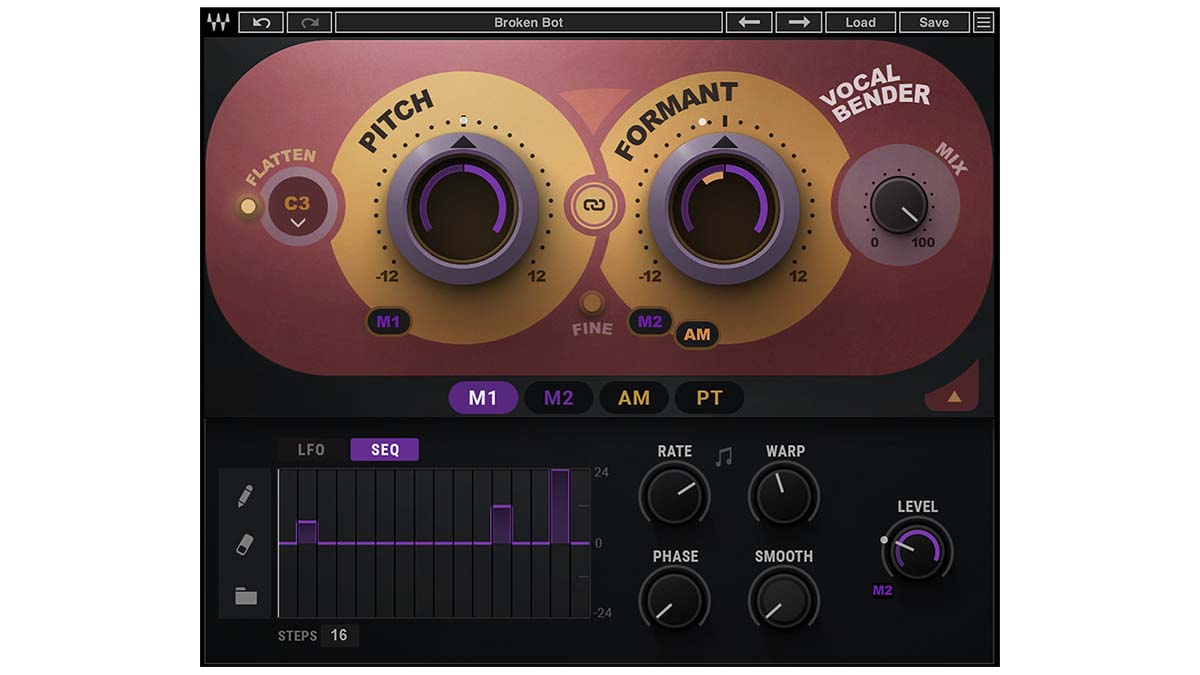MusicRadar Verdict
Modulated vocals are going to be in vogue for a long time, and with this valuable tool, you’ve all you need to shape your own with no stress.
Pros
- +
Incredible levels of manipulation.
- +
Simple and accessible UI.
- +
No latency or sync loss.
Cons
- -
Make sure you update to Waves V12, as default UI size is tiny!.
- -
More complexity available elsewhere.
MusicRadar's got your back
What is it?
It’s hard to know exactly where the trend for overtly pitch-shifted, processed vocals in modern pop first began.
While vocoding had been commonplace in more outré fields for decades and intermittently used in a somewhat gimmicky fashion on various big hits, particularly those concerned with technology (here’s looking at you, Trevor Horn) it arguably wasn’t until Cher’s 1998 dancefloor-filler Believe that on-the-nose auto-tune became the viable ingredient in the stew of modern pop production it is now.
Since then, processed vocals have become commonplace across many genres, with the rise of EDM and its often cartoonish musical landscapes bleeding across the spectrum of pop. Vocals that – to varying degrees – modify in pitch and intensity, distort, stutter and loop can be found almost anywhere. It’s a state of affairs that plugin heavyweight Waves is keenly aware of.
Its solid form in this field is demonstrated by products such as the recent voice-controlled processing synth OVox and the classic (but still mightily useful) Tune. Waves now offers up speedy, real-time pitch-shifting and instant access to some of the modern vocal producer’s tricks, all controlled via an intuitive UI.

The basic simplicity of the UI invites immediate experimentation and reminds us in no small way of SoundToys’ excellent Little AlterBoy, with which it shares an identical dual-knobbed design. That being said, there is a significant amount of complex, and utterly unique, programming potential here.
These two knobs, labelled Pitch and Formant, can be scaled up or down by 12 semitones (or if selecting the ‘Fine’ view, by 1200 cents). Pitch in this context is referring to the central tone of the human vocal, whereas Formant covers the resonant frequencies that shape the overall timbre of the vocal.
If you’re a tad confused as to this subtle difference, a quick dabble on a pre-existing vocal track sonically illustrates that difference – and also how dramatically this simple tool allows us to totally transform our vocal sound.
To the left of the Pitch control, the Flatten button allows us to force the input signal to snap to a predetermined note from C2 to B3 – and makes it affect an eerie monotone. Our tests prove that this is a really handy, speedy tool for building up augmented choruses and harmonies across multiple tracks. The resulting effect of building several carefully tuned, flattened vocals can easily conjure that slightly robotic Bon Iver-esque texture.

There’s a simple Wet/Dry mix knob to the right of Formant too, while between both our major knobs, a small link chain simply allows us to move both controls simultaneously while thoughtfully keeping any offset in play. This is particularly handy once we get into the more advanced controls.
Round the bend
Digging into the presets a little further reveals a diverse range of instant effects. There are some presets that can bolster a performance, like ‘Fake Vibrato’ which sneakily adds a realistic-sounding vibrato to your vocal. It’s actually astonishing how our (admittedly sub-par) vocals can take on a studied polish by delicate application of this preset.
Dad Support provides us with a very recognisable sound used by many to fatten up a vocal section with a low baritone. It reminds us of the numerous Stormzy tracks where this technique is frequently used.
The more fun presets include Game Over which add a cool arcade game effect, which could be used to add some sonic colour, while the demonic Dark Magician is – genuinely – absolutely terrifying, particularly when applied to a tender, close-mic’ed voice.
It’s clear that some of these presets should only be applied to vocals at specific parts of a track, while others could subtly run throughout sections (Low Double Tracker is a nicely subtle enhancer). All of these presets could serve a purpose in your tracks, and can be used as jumping-off points to explore the outer reaches of what Vocal Bender is capable of.
Performance and verdict
Though the main controls are simple to experiment with, and results can be crafted speedily, once we reveal the modulation and automation options, vast creative scope presents itself. The four sub-windows can be revealed by clicking on one of the four acronyms beneath the main window – this is easy to miss if you’ve not consulted the manual.
Each of the four modulators can be neatly dragged to the Pitch, Formant or Mix knobs, to kick in once a certain threshold is met. Clicking on M1 or M2 opens up a sub-window where we can delicately build up unique LFOs, and Step Sequences, using both a Pen tool and the delicate carving of the Phase, Warp, Smoother and Level controls.
The ‘Organic Modulators’ (AM and PT) use the input signal itself as the starting point of their modulations, AM (Amplitude) allows you to use the amplitude envelope of your vocal signal to dictate when other modulations come into play, while PT (Pitch) erases all pitch detection data from the vocal signal to make way for more detailed and individual pitch variations.

• Output Audio Exhale
A vast ‘vocal engine’, similarly geared towards emulating modern pop vocal quirks.
• iZotope VocalSynth 2
A versatile and highly adaptable voice processing system, VocalSynth 2 sounds and operates better than ever.
A simple blue ring, along with a small indicator displaying the acronym of the modulation appears beneath one of the main knobs, once you’ve dragged and dropped.
Dragging vertically over this modulation slot adjusts the modulation depth, illustrated by a small coloured arc inside the knob. This type of automation can be a superb way of introducing vocal effects (such as sudden pitch drops, or additional vocal support) that activate based on the volume of the input signal, so the intensity of your performance can be the triggering factor.
While we’re only really scratching the surface of the range of possibilities presented by the plugin’s modulation controls, the aim of the game with Vocal Bender is really getting that professional-sounding vocal manipulation at speed.
We’re happy to report then, that not only did Vocal Bender provide that within minutes, but that there was absolutely no processing lag. We can dramatically scale the pitch of our backing vocals on the fly during track playback, and experiment with modulating our vocal in order to get the right tonal qualities without any CPU slack.
We’re happy to report then, that not only did Vocal Bender provide that within minutes, but that there was absolutely no processing lag
If you just want to jump straight in to emulate the tricks of the pros, then Waves has thankfully provided a wide range of impressive presets. These include those that add additional deep and high voices, vocal doubling, harmony effects and humorous ‘character’-types such as ‘Chipmunk’ and ‘Broken Bot’. See the boxout for more information on these.
Vocal Bender is certainly one of the slickest vocal plugins we’ve experimented with. While those hankering for more expressive vocoding effects will find more appeal from Waves’ larger OVox vocal synthesizer. The (complimentary) Vocal Bender is undoubtedly the best in class for quick-fire, modern pitch manipulation.
MusicRadar verdict: Modulated vocals are going to be in vogue for a long time, and with this valuable tool, you’ve all you need to shape your own with no stress.
The web says
“Despite the initial simplicity of the interface, this is a surprisingly powerful plug-in. The ability to create robotic vocal sounds, artificial harmonies and vibrato in one plugin is very handy. This isn’t going to be for everyone, but if you’re working in contemporary music, you should explore this for its formant shifting sounds alone.“
MusicTech
“In the context of a mix, the sound quality is impressive and everything works smoothly when modulation is added. The key to great results is automating the controls and also making sensible use of the modulators, but there are plenty of presets to get you started.“
Sound On Sound
Hands-on demos
Waves Audio
Sean Divine
Reid Stefan
Specifications
- TYPE: Vocal processor plugin
- KEY FEATURES: Real-time monophonic voice manipulation, zero latency, LFO, SEQ, Amplitude and Pitch modulators, ‘Flatten’ feature, Mix knob
- SYSTEM REQUIREMENTS: Mac OSX 10.13.6 or later (Intel only), Windows 10 64 bit (version 2004 and above); 8 GB RAM, 8 GB free disk space on the system drive,
- CONTACT: Waves Audio
Computer Music magazine is the world’s best selling publication dedicated solely to making great music with your Mac or PC computer. Each issue it brings its lucky readers the best in cutting-edge tutorials, need-to-know, expert software reviews and even all the tools you actually need to make great music today, courtesy of our legendary CM Plugin Suite.
“Excels at unique modulated timbres, atonal drones and microtonal sequences that reinvent themselves each time you dare to touch the synth”: Soma Laboratories Lyra-4 review
“I used everything I knew about music”: How Green Day exceeded expectations with their most ambitious song
YouTube just added AI tools that makes musicians, library music and video editors redundant











